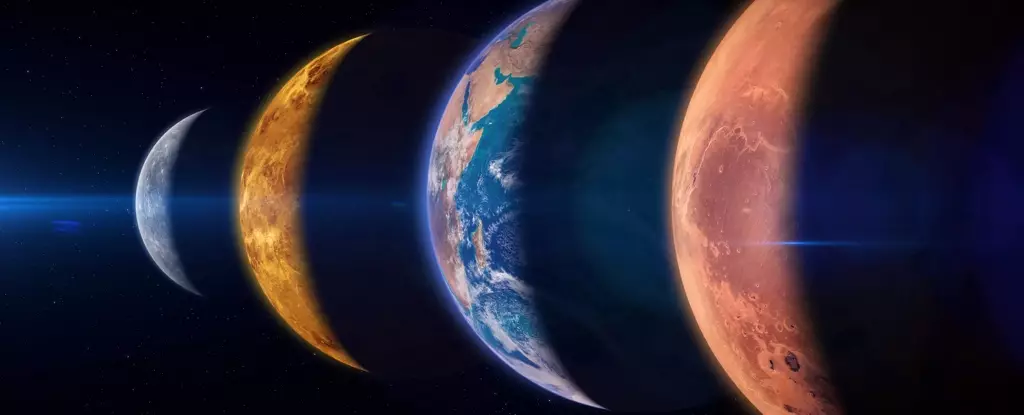As stargazers and astronomy enthusiasts eagerly await the evening of February 28, 2025, the cosmos is set to unveil a spectacular show across the night sky. This date marks a rare celestial event when all seven planets of our Solar System—Saturn, Mercury, Neptune, Venus, Uranus, Jupiter, and Mars—will align in a remarkable display known as a great planetary alignment. This extraordinary phenomenon invites both novice and seasoned sky watchers to observe the planets forming what appears to be a harmonious line against the dark canvas of space.
Planetary alignments are not frequent occurrences. While it is commonplace for several planets to congregate on one side of the Sun, witnessing the alignment of seven celestial bodies is an exceptional event. Historically, alignments have ranged in number, from a trio of planets to a maximum of eight, but alignments involving all major planets are notably scarce. A configuration involving five or six planets is categorized as a large alignment, with five-planet configurations occurring more regularly than six-planet alignments. In contrast, alignments involving seven planets are exceptionally rare and warrant significant attention from the astronomical community.
It’s essential to understand the mechanics behind these celestial alignments. The planets, while they may appear in a straight line from our vantage point, do not align perfectly as depicted in artistic illustrations. Instead, they align along an imaginary line due to their shared orbit around the Sun, which lies on a flat plane called the ecliptic. Although some planetary orbits may have slight inclinations with respect to this plane, the majority remain relatively aligned.
The Science of Planetary Formation
The alignment of planets can be traced back to the origins of our solar system. Around 4.6 billion years ago, a young star emerged in the heart of a swirling cloud of gas and dust. As this protostar formed, the surrounding material began to orbit and flattened into a disk-like structure—similar to grooves on a record. Any remnants of this disk gave rise to the planets we know today. Consequently, all planets orbit the Sun within a consistent visual plane, which simplifies their alignment possibilities.
As planets traverse their elliptical orbits, there are moments when they can be viewed simultaneously from Earth. This synchronicity is what allows us to witness such a spectacular sight on February 28, 2025. However, each person’s ability to experience this celestial phenomenon will depend considerably on their specific location on the planet.
For aspiring astronomers eager to partake in this cosmic event, preparation is crucial. A variety of resources are available to help enthusiasts determine the best time to observe this planetary convergence. Websites such as Time and Date offer interactive tools to plot specific dates, displaying rise and set times for each planet along with their positions in the sky. Similarly, Stellarium provides web-based insights into planetary movements for different locations.
For those opting for mobile solutions, the Sky Tonight app utilizes your phone’s GPS capabilities to deliver real-time information about celestial bodies visible in your immediate vicinity. These resources are invaluable in maximizing your observational experience.
To truly appreciate and identify the planets in this great alignment, the use of binoculars or a telescope is highly recommended. The added magnification can transform your stargazing from a simple task into a remarkable journey through our celestial neighborhood, revealing intricate details often unnoticed with the naked eye.
The Anticipation of a Spectacular Show
As February 2025 approaches, stargazers and science lovers alike can only hope for clear skies and an unobstructed view. The upcoming planetary alignment serves as a reminder of the beauty and marvels of our universe. Engaging in this historic moment fosters a deeper connection between humanity and the cosmos. Whether you’re an experienced astronomer or simply someone looking up at the night sky, this event is a rare opportunity to witness the Solar System’s remarkable dance, reminding us of the infinite wonders that lie beyond our home planet. So, prepare your viewing tools, gather your friends and family, and mark your calendars for a night of awe and wonder that promises to be etched in memory.


Leave a Reply